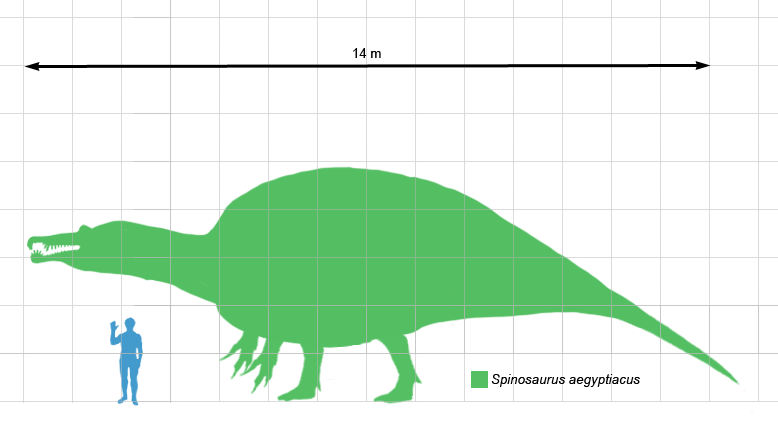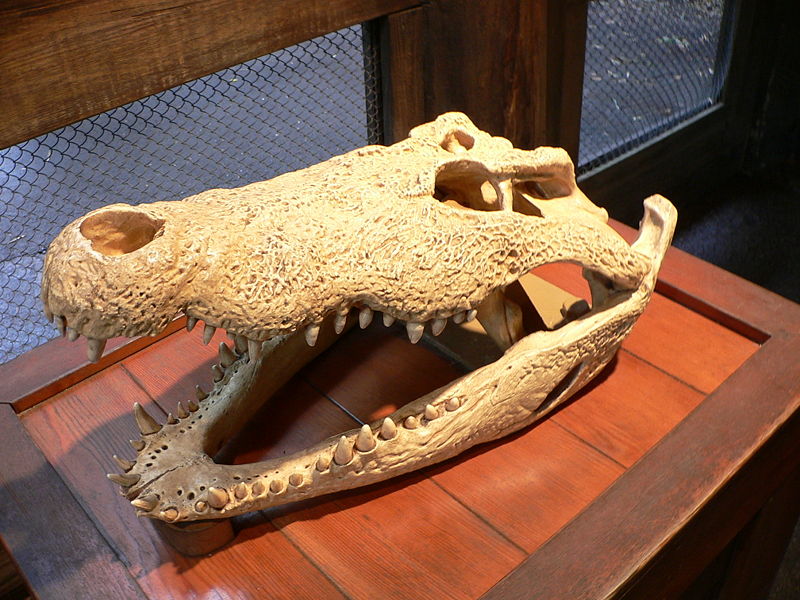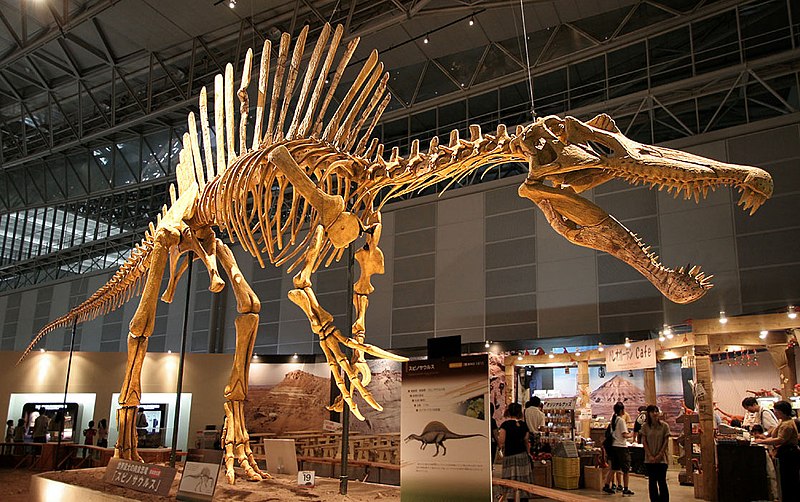Welcome back folks! As usual, I'll presume with updates before getting to today's non-fiction article, written by yours truly!
Howdy folks! Welcome back to my website. I've got a lot of cool updates before we get to the main article, so let's get started!
The second episode of my stop-motion series Planet of the Dinosaurs, called The Tropical Poles, is coming along greatly so far! It has reached 75%! I'm not sure it will be finished by the end of this month, but hopefully by the end of the first week next month. Lord willing!
As many of you might already know, the latest Pixar release, Monsters University, just went into theaters on the 21st of this month. I haven't had the opportunity to see it yet, but I'll probably be able to when it comes out on DVD or on Netflix. I can't wait!
Here's a clip from the movie:
So what is Pixar working on next? Well, their next movie, coming out next summer is called The Good Dinosaur. They haven't released much on an actual plot, but here's a basic overview of the project:
They are kind of cartoony but they are dinosaurs; they are not walking around with clothes on or anything like that, they still are kind of dinosaurs. We focused on mostly the plant-eaters, not the carnivores… Their society becomes more of an agrarian society, meaning farmers. They become farmers. It’s a very funny story about a certain way of life that a young dinosaur has trouble fitting into and he ends up going on this quest. He kind of messes up and he has to put everything right by going on this quest and on that quest he meets this our character that is an outcast from his society too and so the two of them form this bond and it becomes this unique kind of story…
Last week, I mentioned that another movie I'm looking forward is the release of the movie known as Jurassic Park IV. If you've read last week's article, you'll remember that this movie's new release date appears to be 2015 based on a teaser banner at the Licensing Expo 2013. This past week, I've literally crisscrossed the internet to see if this date is correct, and it seems valid, so we'll assume this is the new date. That's not the only piece of news everyone has been talking about concerning this film! We even have a potential plot! (SPOILER ALERT: this “spoiler” you're about to read would reveal about as much information if you were watching a trailer, but if you don't want to know anything about the movie yet, please skip this update) Jobio.com has apparently learned the plot of JPIV through an unknown source. This could be exactly what we fans have been waiting for! Here's what Jobio.com had to say about the possible plot for the upcoming movie:
JURASSIC PARK 4, set in present day Isla Nublar, is now an actual theme park, as originally intended by John Hammond in the first film. It garners 10 million visitors per year and is completely safe - until it's not. The park itself is described as very Sea World-esque and includes an area called the Isla Nublar Lagoon. That means underwater dino's for the first time. No indication of what kind, but there's concept art showing one of the aquatic dino's, as part of a show, jumping out of the lagoon and eating a strung up great white shark like it was a fish for a dolphin at sea world.
As part of a show, you ask? That's right, folks, this will feature "tamed" dino's. In fact, our source indicated that the usually menacing Velociraptors (which will finally be muzzled, along with the T-Rex - until they're not) will actually be used to help fight the threat, which begins in the form of a new dinosaur , not seen in any of the previous films (and not disclosed to us) shows to be much smarter than originally thought and is the main cause of havoc breaking out at the park.
So, to sum it all up, JURASSIC PARK 4 will take place back on Isla Nublar with a fully operational dinosaur theme park (I'm sure no expense was spared) that's both prosperous and safe, until a new dinosaur figures out a way to wreak havoc, causing the use of the now tamed Velociraptors (and T-Rex? Unclear) as a means to fighting the threat.
Well, if you ask me, this plot is a great idea! However, we must keep in mind that this rumor may or may not have any fact behind it. It is believed by some that this plot description appears to be from the script before the “major changes” were made. So perhaps this plot is inaccurate, but we don't know for sure yet. We also don't know what people or dinosaurs will be appearing in the movie for sure, yet (although Velociraptors and T. rex have a 99.99% chance of being present regardless of whether this plot is the real thing). But if the plot Jobio.com has is accurate, we should be seeing, not only raptors, but also the longed for marine reptiles (maybe a gnarly Tylosaurus mosasaur will make an appearence) as well, AND also the “new scary dinosaur” that's been talked about for a long time can be seen coming into play. For now, this assumed plot is all we know, as Universal hasn't told us their plot yet. But I think it's time to officially say, “The exploration back to Isla Nublar is about to begin!”
Now to get to today's non-fiction article:
As you might recall from my post two weeks ago, we looked at the history of the discovery of the largest carnivorous dinosaur to ever walk the earth: the 60-foot long, ten-ton Spinosaurus. Last time, we learned that the first Spinosaurus remains ever found were uncovered in Northern Africa and were accidentally destroyed in World War II. A few other Spinosaurus fossils have been found since they were destroyed, but they're far from completion. So paleontologists look to Spinosaurus' relatives – other members of the spinosaur family and modern-day animals for clues. First, let's look at one of the most obvious questions: what did Spinosaurus prey on?
 |
| The skeleton of Spinosaurus |
 |
| We humans are puny compared to this beast! |
While we know Spinosaurus ate plants in the world before Man's rebellion against God, which brought death and sin into the world. But what about its diet after the Fall of Man? Well, to find an animal's diet, we must obviously start looking at the mouth and at the teeth. An animal's teeth alone doesn't actually tell you how it behaved or what it ate, but it can give us clues and starting points. The teeth of Spinosaurus are conical-shaped and sharp, somewhat different from your typical theropod dinosaur, which have sharp and serrated teeth. The teeth of spinosaurs resembles not any other dinosaur, but of a different reptile, one still patrolling the waterways of the 21st century: crocodiles! Crocodiles also have sharp and conical-shaped teeth, so by learning how and what crocs mainly eat can give us insight into what dinosaurs, such as Spinosaurus ate. Crocodiles, while antelope and zebra are popular choices, often eat fish, and their conical-shaped teeth are perfect for gripping onto these slippery meals. Does this suggest Spinosaurus ate . . . fish?!? Believe it or not, the 10-ton predator actually probably hunted fish. We have more evidence to back this up. When looking at the teeth of modern-day animals that have similar teeth to prehistoric, we learn that we can guess what prehistoric animals ate. The same often applies with features God “installed” into this creature. The six-foot skull of Spinosaurus is shaped like a crocodile's skull. Perhaps the skull of Spinosaurus is crocodile-like for the exact same reason crocodile skulls are crocodile-like. Like modern crocodiles, Spinosaurus has its eyes and nostrils higher up on the skull. This would help when it was fishing because it could have its jaws half-submerged in the water and still breathe at the same time.
 |
| The skull of a crocodile |
 |
| The skull of Spinosaurus bears great resemblance to that of a crocodile's |
When scientists took a close look at the skull of Spinosaurus, they realized that there were a bunch of little pits and holes on the end of the snout. Once again, scientists compared the skull of Spinosaurus with the skull of a modern crocodile and bingo! Crocodiles also have pits and little holes on their snouts. What are they used for? Well, in crocodiles, the pits are attached to sensitive nerve endings. These nerve endings can detect movement in the water so even if a crocodile can't see its prey, it can feel the disturbance in the water and know where the prey is. Perhaps Spinosaurus could stick its snout into the water and feel the water movements of fish below the surface. Does the notion of the 60-foot long Spinosaurus eating mainly fish seem a bit strange to you? After all, how could this huge hyper-carnivore sustain itself on fish? The answer is that many of the fish in pre-Flood Northern Africa (which was much wetter and swampy than today) were huge! Some fish, such as the a type of giant sawfish called Onchopristis, grew over 24 feet in length! That's what I call “catch of the day”! We even have evidence that Spinosaurus hunted Onchopristis in particular: an Onchopristis fossil has been found with Spinosaurus teeth embedded in it.
 |
| Onchopristis looked just like this modern sawfish, just a lot bigger! |
And Spinosaurus also had a weapon that no crocodile has: arms that were probably over eight-feet in length and ended in nine-inch dagger-like claws! These claws would be useful in helping haul the mighty fish out of the water so Spinosaurus could chow down.
To help you visualize a fishing Spinosaurus, take a look at this clip from the BBC television series called Planet Dinosaur, in which a Spinosaurus catches the big whopper in the river – Onchopristis!
This series is one of my favorites, I hope you enjoy it:
Did you know that Spinosaurus' diet wasn't restricted to giant fish? Fossil remains of the closely related Baryonyx found in Europe, contains the bones of an herbivorous dinosaur called Iguanodon, and a fossil pterosaur, or flying reptile bone in Brazil contains the tooth of a spinosaur. Judging by the position of the tooth, we can tell that the pterosaur was probably attacked by the spinosaur. So spinosaurs including Spinosaurus not only were hunters of water, but they were also ferocious predators on land as well. Scientists estimate that Spinosaurus could run over 20 mph, and that's faster than most of us can run! So if Spinosaurus is coming for you and unless you're an Olympic sprinter, you'd better learn how to hide!
 |
| Spinosaurus was a ferocious predator on land AND in the water! |
Now it's time to examine the most obvious mystery of Spinosaurus: what exactly put the spine in Spinosaurus? Actually, perhaps I'd better reword that to: what exactly did that sail of Spinosaurus do in life? Unfortunately for us, no animal alive today has a sail quite like Spinosaurus, so we can't really make a comparison. The sail on Spinosaurus' back was about six to seven feet tall and was made up of the creature's backbone. What was it for? Well, many scientists believe that the sail was littered with blood vessels, kind of like the ears of an elephant or a hare. The blood flowing through the sail would have had temperature changes much faster than the rest of the body. If Spinosaurus needed to cool down, cool air would cool the blood in the sail and then this now-cool blood would flow through the rest of the dinosaur's body. Therefore it would cool down the Spinosaurus. The same would work, if the animal wanted to warm up, but instead of air, it would use the heat of the sun. Even if Spinosaurus was a warm-blooded creature, the ability to cool itself down rapidly would have been helpful for the creature. Isn't God ingenious?
Some scientists believe that, instead of trying to stay cool, the sail of Spinosaurus was a way for males to look cool. Perhaps, like many other animals, Spinosaurus had wacky body equipment for display purposes. Many modern insects, mammals, birds and reptiles use weird and wonderful displays to impress potential mates.
Another theory is that Spinosaurus used the sail during fishing. How did it do that? Some species of herons today use their wings to create an umbrella-like shape, casting a shadow on the water. Fish are attracted to the shadow, but little do they know that they're swimming right into range of the heron's beak and SNAP! The heron gulps down a fish. Perhaps the sail of Spinosaurus also attracted fish and could help this dinosaur catch its prey. And who knows? Considering no one around today has seen a living Spinosaurus, who's to say it didn't use its sail in all the ways mentioned? We may never know, but it's a possibility!
 |
| What do you think Spinosaurus used its sail for? |
Alas, it is time to end our time together for this week. Be sure to come back next week and you can read Joy's latest article. The week after that is when we can delve into the conclusion of my series on spinosaurs, some of the weirdest dinosaurs that ever lived! Hope to see you next week, bye for now and God bless you!
PS: To post a comment (this is highly encouraged), please simply click the post you wish to comment on, scroll to the bottom of the page and put what you wish to say or ask in the comment box. Then in the box below the comment box choose who you’re going to comment as. And then click preview or publish. If you aren’t signed into Google, you’ll be asked to type in a word and a number in the space provided. Type the word, put a space and then put the number. Then your comment is on the blog!
PS 2: Have a puzzling question about animals (including dinosaurs), myself, my latest book, my stop-motion movies, Creation or etc? Please post your question as a comment or send me an email at animaladventures@aol.com.
PS 3: What’s the latest scoop? Check it out at SMILEY’S NEWS.
PS 4: Be sure to comment on the latest stop-motion movies too, this will help me improve them.










